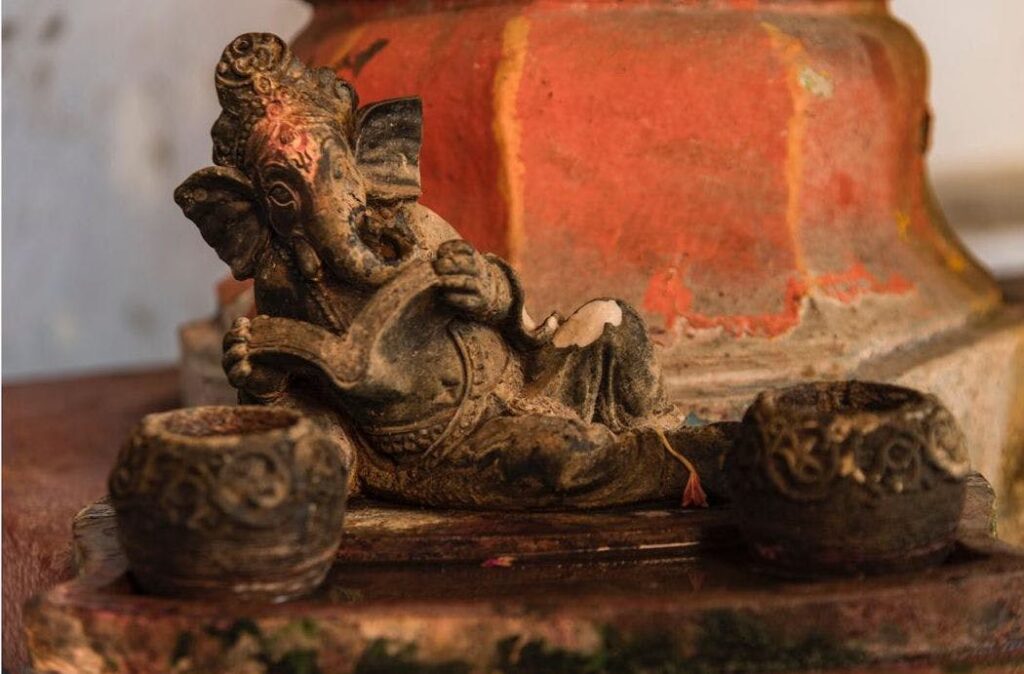The photographs of Biju Ibrahim at Lokame Tharavadu flash on a unique reckoning of human life that’s illuminating as well as intriguing.
Human beings are central to Biju Ibrahim’s photographic world. Even when humans do not figure in them, their absence is merely physical; the spaces, architecture, landscapes and objects in the frames are always engraved, enmeshed and en-tranced by the human. At work here is intense osmosis between the human and the non-human, where the object-world and the physical are marked and permeated by their deep entanglements.
This intimate relationship between the human/e and the world/ly is also one that is naturally and profoundly spiritual. Situated both in the realm of the mundane and the magical, the profane and the sacred, the human and the divine, these images invoke intimacy and a certain calm, where the viewer becomes the meditative centre of the pictured world.
In his earlier series on Mattancherry, Biju Ibrahim portrayed the rich ethnic and religious diversity of the locality. Those images of people from different communities portrayed men and women in their everyday, domestic and occupational settings. These images resonated with a deep sense of emplacement, of being at home. The people we saw there – most often posed and frontal – and the surroundings they inhabited encapsulated and also reflected upon one another.
More than being ‘naturalistic’ these individuals are profoundly ordinary in the sense of simply being themselves, in their own places. Imaged frontally, they inhabit their spaces – homesteads, drawing rooms, dining halls, workplaces, front yard, veranda, street fronts, shops etc – and gaze at us, in the process, making us part of their lives and habitat. We feel at home in their world – physical, social, emotional and spiritual. It is this sense of intimacy and feeling of bondedness that give Biju’s pictures a peculiar human warmth and meditative character.
Serene snaps
The photograph series on show at Lokame Tharavadu is titled the Qutub Shahi Project and it consists of pictures of people and sites in and around the Qutub Shahi in Hyderabad. The colour tones, lighting and mise en scene of the pictures exude the serenity of the place – a place where pilgrims come to pray and local people go about their daily lives. The boundaries that separate the divine from the human, the profane from the sacred are erased and form a seamless whole, one enveloping and crisscrossing the other.
The seeker and the sought are one and the same here; so, are the pilgrim, the pilgrimage, and the holy site. The men and women bowing and offering prayers at the dargah, the women standing near the tree, the young students at the madrasa, the man sitting on the floor cutting meat, the men sitting and reading newspapers, the fort and the silk coverings and peacock feathers that adorn the holy site – all have a certain sparsity and solemnity to them. Like the photo image itself, there is nothing less or more here. What is, is.
The people and objects, their gestures and poses, all seem to proclaim their ‘be-longing’ to a human and also a spiritual world. These men and women spontaneously involve and include us in whatever they are engrossed with or engaged in, whether it be prayer or work, learning or meditating, labouring or resting.
Reflective moments
These images from a site of mourning transform the ordinary into the epiphanic, the profane into the sacred, the transient into the enduring. The looks of the people in the photographs are directed inwards and outwards, towards the self and the world. The women who stand beside the tree or the muthavalli squatting on the floor – all possess or are possessed by a certain grace and poise. One can feel the deep realization about and calm reconciliation with the body, self, other and the world in them.
Biju’s photographs resonate with a meditative energy that urges us to pause, reflect and ponder upon the world that opens up to our gaze its several layers: physical, emotional, and spiritual.

